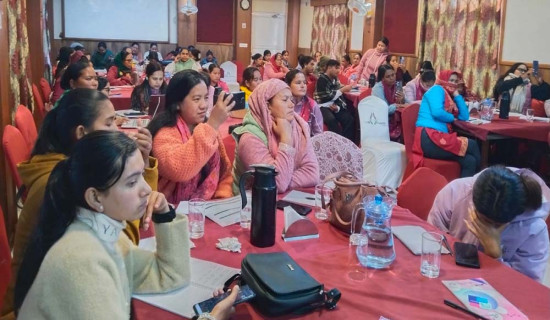- Thursday, 25 December 2025
Depression Is Not A Choice
According to Nepal Police data for 2023–24, over 7,000 people in Nepal died by suicide last year, nearly 20 people each day. Behind every number is a family that lost someone they love, yet our public response still leans on private willpower. We continue to treat mental distress as an attitude rather than an illness. That mismatch between scale and response is the quiet crisis. The belief that mental suffering is voluntary is rarely spoken aloud, but it lingers in the way we respond. “Be positive”.” Keep yourself busy”. “Don’t overthink it”. These phrases sound harmless, even supportive. In truth, they shrink a complex medical condition into a matter of mindset, and shut down the chance for real conversation.
Depression is not diagnosed by attitude. Clinicians use structured criteria, not a vibe. The Diagnostic and Statistical Manual of Mental Disorders (DSM) guides diagnosis across mental health conditions by listing the specific symptom clusters, minimum duration, and required level of impairment for each disorder. Yet even when the problem is recognised, help is distant. Mental health services remain drastically underfunded, claiming only a tiny share of a health budget that itself receives less than five percent of national spending.
The total number of psychiatrists in Nepal is just over 240. Clinical psychologists are far fewer, with fewer than three dozen registered with formal MPhil training. The Kathmandu Valley concentrates the majority of mental health services. There is only one government-run mental hospital in the country. About 50 psychiatric clinics operate across Nepal, but they are largely private and located in cities. Primary care settings, where most people first seek help, often lack any staff trained in mental health. Screening tools exist, but are rarely used due to low awareness and inadequate supervision.
The result is a treatment gap so wide that 85 to 95 percent of individuals with a mental health condition receive no care. Stigma widens it further. When messages imply pain equals weak character or thin faith, people internalise blame, delay seeking help, and symptoms deepen. Casual dismissals like “stop seeking attention” or “others have it worse” do not motivate. They isolate someone already struggling with low energy and slowed thought.
Agency still matters, but we keep pointing it at the individual rather than the system around them. The meaningful decisions lie with all of us. Families can choose to listen instead of advising. Schools can choose to train staff as gatekeepers instead of labeling students as disobedient or lazy. Clinics can choose to integrate simple, validated screening tools. Policymakers can choose to fund programmes that work. And communities can choose to treat emotional health with the same urgency and legitimacy as physical illness.
These changes can lead to practical shifts. Nepal can embed mental health screening into routine primary care. Psychosocial support posts can expand beyond the capital. Maternal mental health programmes can be scaled up. Funding must grow consistently each year, not remain stuck at token levels. New staff should be trained in teams, including lay counselors who can extend reach into areas where specialists may never be posted.
National suicide prevention efforts can draw from proven tools. School and university programmes should be co-designed with students to reflect real-life concerns. Depression is not a choice or preference, and recovery does not arise from guilt. The real decision facing Nepal is not whether people should feel better. It is whether we will stop moralising distress and finally treat it as the health issue it is.
How did you feel after reading this news?





-square-thumb.jpg)
-original-thumb.jpg)










